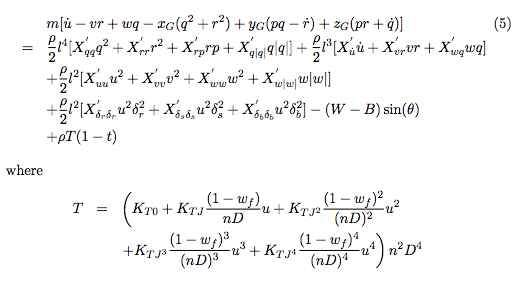
Does this look normal to you? To all submarine officers, it is child’s play. The 2014 STEM-H fellows found several ways to make equations like this (Axial Force) interesting for the classroom environment in Middle and High Schools.
Digital Content Developer, NHF
Several weeks ago, I had the pleasure to spend an afternoon with the 2014 STEM-H fellowship teachers at the Submarine Force Library and Museum in Groton, CT. This year marks the second STEM-H fellowship in Groton and the sixth overall. The previous four fellowships were held at the Cold War Gallery at the National Museum of the United States Navy in Washington, D.C. The fellowship runs for two weeks in the summer.
Fellows teach a STEM (Science, Technology, Engineering, and Mathematics) discipline at their respective schools in Connecticut and Rhode Island. With subjects covering everything from mathematics to earth science, every teacher brought something different to the discussion. Such diversity made for a well-rounded and fulfilling experience for both teachers and coordinators at NHF and the Submarine Force Museum.
NHF education coordinator Captain John Paulson, USN (Ret.) planned an immersive and intensive two-week course of activities for the teachers. The Submarine Learning Center from the Groton Submarine base provided teachers with instructional presentations on the various functions and capabilities of submarines and their application to STEM principles. Fellows used the exhibits of the Submarine Force Museum and information gleamed from several tours through local naval facilities like the Electric Boat model room, Naval Submarine Medical Research Laboratory, and USS Virginia (SSN 774).
How do you teach the most complex and advanced machines of warfare to Middle and High School teachers? The STEM-H fellows found the various presentations of submarine science and technology valuable to their eventual lesson plans. During my brief visit on the afternoon of July 16th, Submarine Learning Center volunteer Lieutenant Joshua Merdes gave a presentation on the differences in design and technology between fast attack subs of the Cold War like the Los Angeles-class and the modernized Virginia-class leading the fleet today. As he pointed out, there is more similar than different with the 688s and the latest built today.
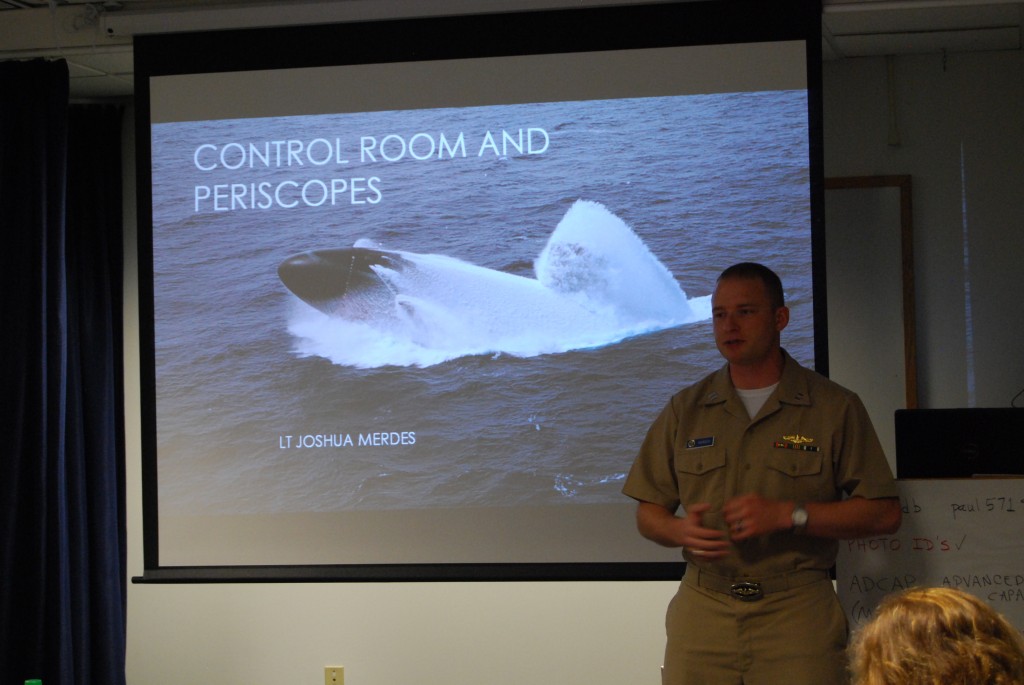
LT Josh Merdes teachers the STEM-H fellows about submarine control rooms and periscopes (NHF Photo by Matthew Eng)
I remember looking around and seeing each of the teachers soaking in the information. Although many of the teachers admitted being a bit overwhelmed at the wealth of material presented to them by the Submarine Learning Center volunteers throughout the two weeks, all of them found a way to incorporate the information into their classroom curriculum. For a long time history major and novice student of the sciences, their adaptability amazed me.
The fellowship team took some time out of their busy schedule to meet with Stefan Pryor, the state of Connecticut’s Commissioner of Education. Commissioner Pryor had much to say about the progress and impact of the fellowship. “It is very clear that the hands-on approach that has been taken place is going to lead to enhanced learning for our youngsters,” said Pryor. Stonington High School’s Lisa Allen agreed with Pryor. “If you can get through to students using these real-life examples,” she said. “It’s just good teaching.”
The teachers set about perfecting and presenting their lesson plans to each other in the second week of the program. Overall, the teachers enjoyed their experience and their final product lesson plans. Mary Harris of Fitch High School had a very positive response to the fellowship, which offered a unique spin to standardized professional development:
“The STEM fellowship has been the best two weeks of professional development that I’ve ever had and is especially cool because it connects my curriculum, which is chemistry, with the community.”
She went on to say that she “can’t wait” to use the knowledge she gained in Groton in her curriculum next year.
I had a chance to peruse the lesson plans they created a week after the fellowship was over. As a student that always preferred the social sciences, I was curious to see how they incorporated the history and heritage of the United States Navy into their STEM lesson plans. Reading over their brief summaries, I couldn’t help to smile. After I finished reading the lesson plan summaries, I wished I was a young student again – something I thought I’d never say again.
Core concepts like algebra, probability, graphing, and statistics merged with technical science disciplines like molecular theory and propulsion. Captain Paulson noted how each of the teachers’ plans were “highly relevant” to today’s society and the science behind submarine warfare. I can’t wait to see their final products. Teachers can download their plans and learn everything from the function of “scrubbers” to remove carbon dioxide in a submarine cabin to the science behind bouyancy and ballasts using Boyle’s Law. The initial lesson plans are now available online on the USS Nautilus website in a new indexed format.
These bright and talented teachers are keeping the Navy fresh in the minds of future generations to follow and study. It is more important than ever to find ways to make the learning experience multi-disciplinary, which makes our fellowship so important and valuable to the American public. I am looking forward to seeing what next year brings!
A special thanks to Lieutenant Commander Benjamin Amdur and the rest of the team at the Submarine Force Library and Museum for their hospitality during my visit (and for hosting the entire fellowship, of course!)
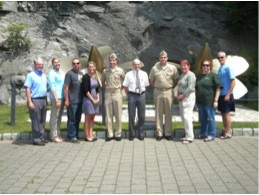 The 2014 STEM-H Fellowship Team was (left to right): John Paulson, Naval Historical Foundation STEM Team Leader; Michelle Mokrzewski, Grade 7&8 STEM teacher at West Side Middle School, Groton, CT; Robert Mayne, (of North Stonington, CT), Mathematics and Intro to Engineering teacher at Chariho Regional High School, Wood River Junction, RI; Caitlin Kennedy, Mathematics teacher at Robert E. Fitch High School, Groton, CT; Lieutenant Commander Benjamin Amdur, USN, Officer in Charge & Museum Director; Tony Quatroche, Submarine Force Library and Museum Association Board Member & Fitch HS mathematics teacher; MMCS(SS) Dominick A. Grimaldi, USN Historic Ship Nautilus Command Senior Chief; Mary Harris, Chemistry and General Science teacher, Robert E. Fitch High School, Groton, CT; Lisa Allen, Chemistry teacher at Stonington High School, Pawcatuck, CT; Paul Mezick, Physical Science, Earth Science and Biology teacher at Daniel Hand High School, Madison, CT
The 2014 STEM-H Fellowship Team was (left to right): John Paulson, Naval Historical Foundation STEM Team Leader; Michelle Mokrzewski, Grade 7&8 STEM teacher at West Side Middle School, Groton, CT; Robert Mayne, (of North Stonington, CT), Mathematics and Intro to Engineering teacher at Chariho Regional High School, Wood River Junction, RI; Caitlin Kennedy, Mathematics teacher at Robert E. Fitch High School, Groton, CT; Lieutenant Commander Benjamin Amdur, USN, Officer in Charge & Museum Director; Tony Quatroche, Submarine Force Library and Museum Association Board Member & Fitch HS mathematics teacher; MMCS(SS) Dominick A. Grimaldi, USN Historic Ship Nautilus Command Senior Chief; Mary Harris, Chemistry and General Science teacher, Robert E. Fitch High School, Groton, CT; Lisa Allen, Chemistry teacher at Stonington High School, Pawcatuck, CT; Paul Mezick, Physical Science, Earth Science and Biology teacher at Daniel Hand High School, Madison, CT

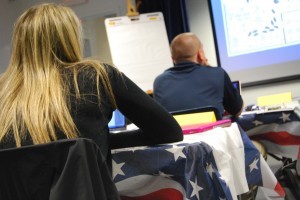
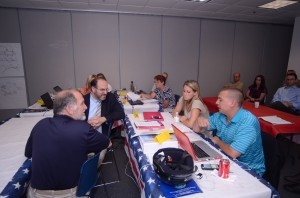

Kevin Koppelmann